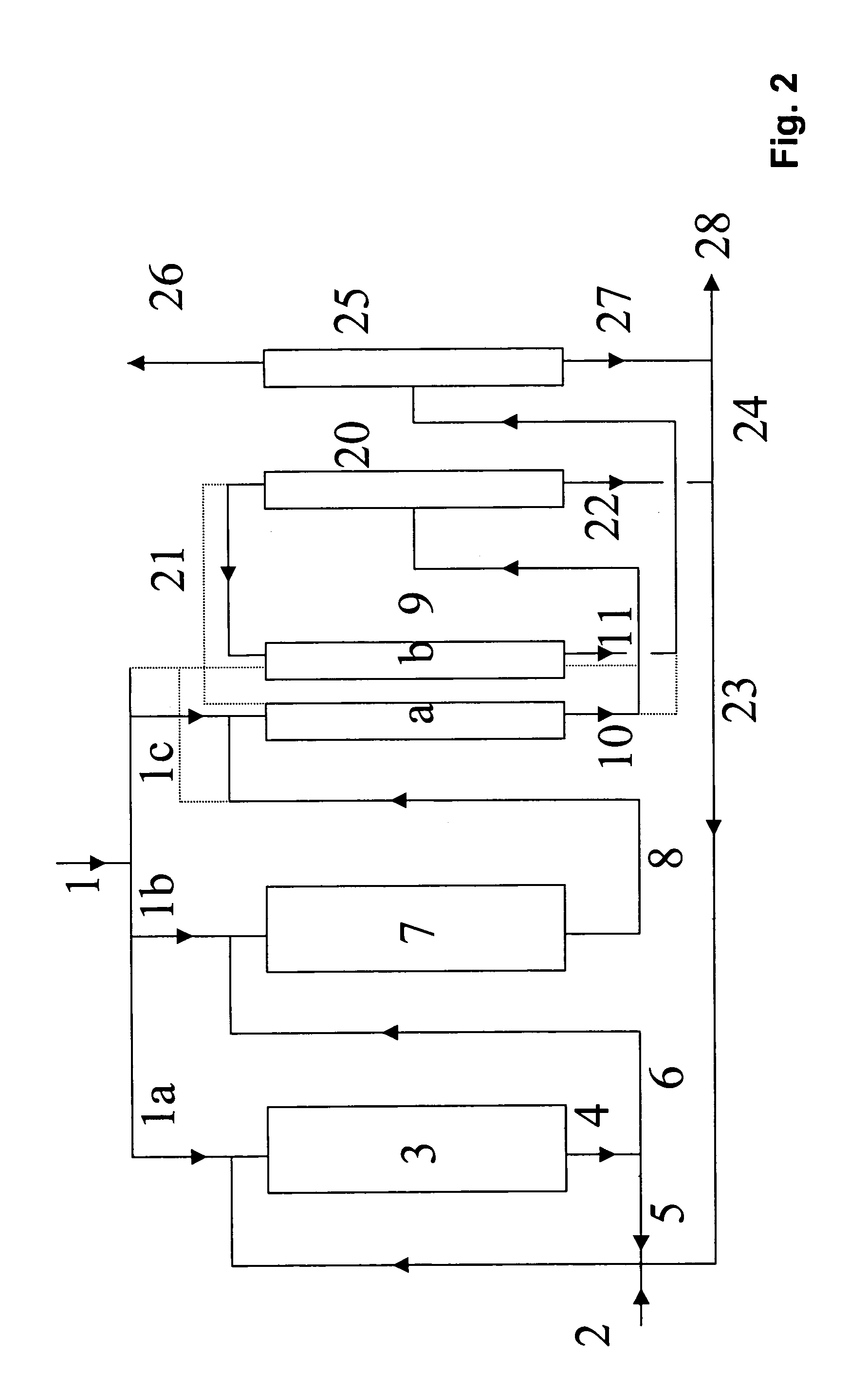Process for preparing tert-butanol from isobutene-containing hydrocarbon mixtures
a technology of isobutene and hydrocarbon mixture, which is applied in the field of preparing tertbutanol, can solve the problems of space-time yield, yield and/or selectivity, work up but not satisfactory, and achieve the effects of increasing tba, increasing selectivity, and increasing tertbutanol conten
- Summary
- Abstract
- Description
- Claims
- Application Information
AI Technical Summary
Benefits of technology
Problems solved by technology
Method used
Image
Examples
example 1
According to the Invention
[0085]The reactor was supplied alternately with the mixtures (Xa) and (Xb). The cycle time was 4 hours. Thus, the mixture (Xa) was fed in for the first four hours, the mixture (Xb) was fed in for the next four hours, the mixture (Xa) was fed in again for the following four hours and so forth. The feed rate for the mixture (Xa) was 47 g / h and that for the mixture (Xb) was 61.6 g / h. The mixture was collected for 48 hours (6 cycles of mixture (Xa) and 6 cycles of mixture (Xb)) and an average analysis of this mixture was then obtained.
[0086]The heterogeneous sample had the following composition (in % by mass):[0087]4.19 isobutene[0088]81.95 miscellaneous C4 [0089]10.62 TBA[0090]3.04 water[0091]0.2 other materials
[0092]The isobutene conversion calculated therefrom was 9.2%.
example 2
Comparative Example
[0093]The feed mixture (Xc) was fed into the reactor. The feed rate was 54.3 g / h. The output from the reaction was collected for 48 hours and an average analysis was obtained.
[0094]The output from the reaction had the following composition (in % by mass):[0095]4.40 isobutene[0096]81.95 miscellaneous C4 [0097]10.33 TBA[0098]3.11 water[0099]0.21 other materials
[0100]The isobutene conversion calculated therefrom was 4.6%.
[0101]In both of the experiments, the same molar amount of each component was fed into the reactor over a period of 48 hours. However, the experiment in Example 1 according to the invention gave an isobutene conversion which was twice that in the experiment in the comparative example (Example 2).
PUM
| Property | Measurement | Unit |
|---|---|---|
| temperature | aaaaa | aaaaa |
| temperature | aaaaa | aaaaa |
| mean particle size | aaaaa | aaaaa |
Abstract
Description
Claims
Application Information
 Login to View More
Login to View More - R&D
- Intellectual Property
- Life Sciences
- Materials
- Tech Scout
- Unparalleled Data Quality
- Higher Quality Content
- 60% Fewer Hallucinations
Browse by: Latest US Patents, China's latest patents, Technical Efficacy Thesaurus, Application Domain, Technology Topic, Popular Technical Reports.
© 2025 PatSnap. All rights reserved.Legal|Privacy policy|Modern Slavery Act Transparency Statement|Sitemap|About US| Contact US: help@patsnap.com


